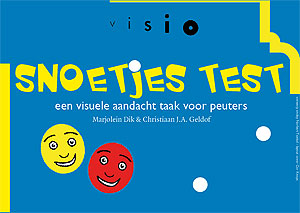Research
Current research at Visio
1. Prevalence of cerebral visual impairment (CVI) in prematurely born children, together with Christiaan J. A. Geldof, neuropsychologist and Meindert J. de Vries, rehabilitation ophthalmologist and the Amsterdam hospitals.Simple but effective means to find CVI on an early age are searched for in this group. Results in “Visual Imprints of Very Preterm Birth. Evidence for cerebral visual impairments in very preterm born children.” by Dr. Christiaan J. A. Geldof ( October 2015). ISBN 978-94-6299-139-2
2. Visual motor integration or visual-motor system
Compared to 10-15 years ago children born prematurely, children with cerebral palsy or asphyxia are better off thanks to improved medical treatment possibilities. The health problems for which they are referred to rehabilitation are much more fine-grained. As children can walk, they also want to accelerate and perform more complex tasks just like their peers . Then the accidents, the fatigue and the feeling of having no connection to age -related activities start to be noticed. There are not enough refined measurements to charter visual motor integration or the visual-motor system in children. The Beery VMI/DTVP-2 tests have children copy geometric shapes while they are sitting – this may tell something about their capabilities for drawing and writing, but not about moving outside, biking and doing sports. The movement ABC has little items where a child must perform/avoid tasks and recognize things while accelerating . In adult rehabilitation the Balint syndrom with optic ataxia is known where simultaneous looking, recognizing and at the same time, automated moving/ acting seems to fail. Surprisingly there are no criteria for children when this domain must have developed, and how limitations are called (optic ataxia in children is hardly mentioned in literature) and what to do about it. I would like to develop an adjusted VMI protocol to be used in visual and motor rehabilitation in the same way in order to come to more unambiguous decisions about the kind of help children need.
3. Backgrounds of Lebers Congenital Amaurosis, together with Meindert J. de Vries, rehabilitation ophthalmologist.
In blind children born with Lebers Congenital Amaurosis (a type of blindness from birth on as first described by ophthalmologist Leber) there seem to be two developmental lines possible. One group develops with some retardation but in the end rather well while the other group shows a development setback around 18 months and develops further on with multiple impairments. 18 Genotypes are known so far of the LCA. Professionals working with children and parents would like to know which genes combination (genotype) is causing the one or the other development (phenotypes) in order to inform parents from the start on what is ahead of them. At this moment the research question may be picked up by London, but nothing is sure yet.
4. Backgrounds of psychogenic visual function loss (conversion), together with Yolanda H. Moleman, Marianne Koster, clinical psychologists and Meindert J. de Vries, rehabilitation ophthalmologist.
An extensive diagnostic and treatment protocol is developed.
5. Development and norm collection of "De Amsterdamse Snoetjes Test", a visual attention test for toddlers, together with dr. Christiaan J. A. Geldof, neuropsychologist.
A pointing- and counterpointing task for very young children. Design and colour make the task also very fitting for children with visual impairments. The first styling was not very handy as turning the pages hampers unambiguous testing. A digital edition of the same idea is next.
